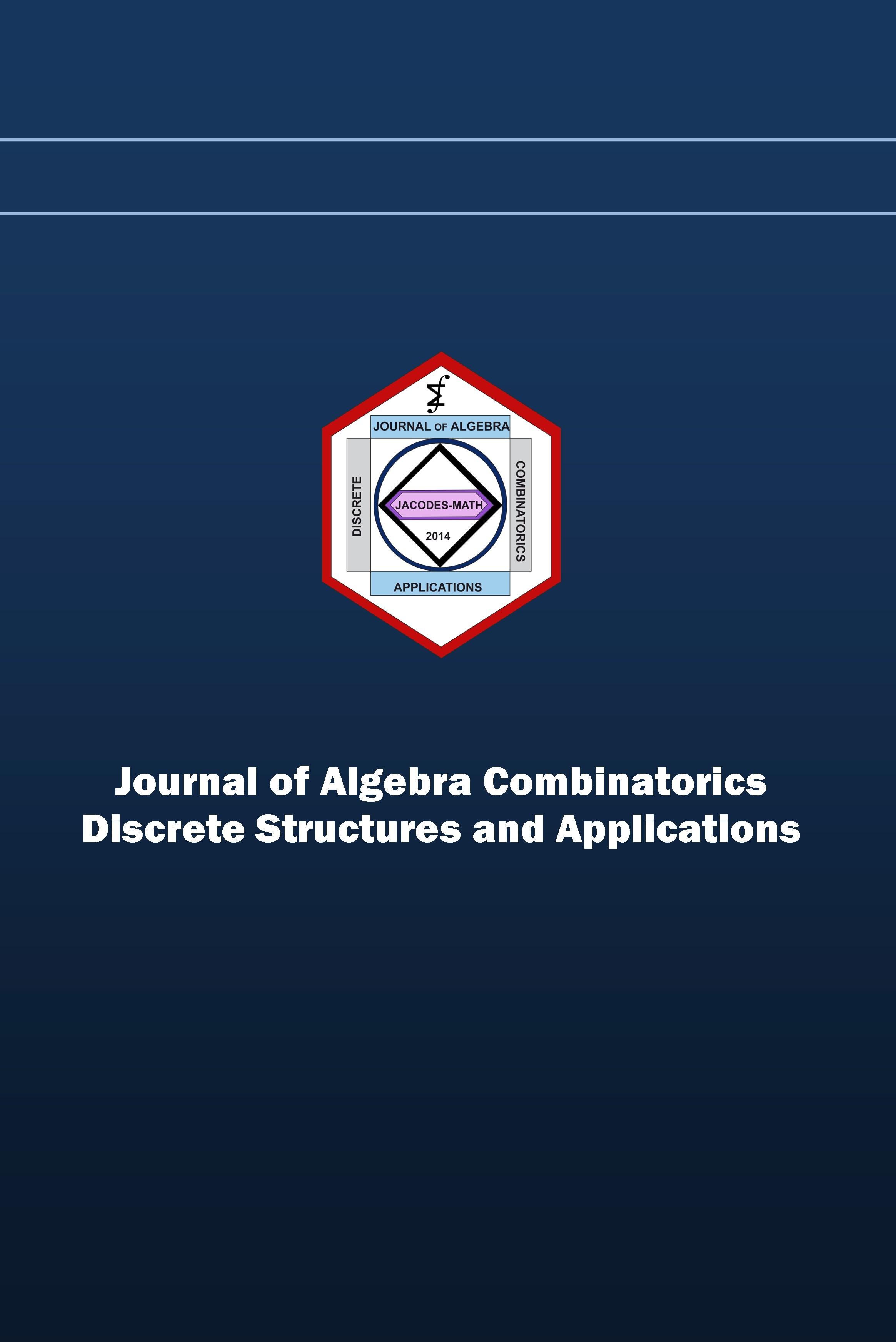On DNA codes from a family of chain rings
On DNA codes from a family of chain rings
Cyclic codes Chain rings, Reversible codes, DNA codes,
___
- [1] N. Aboluion, D. H. Smith, S. Perkins, Linear and nonlinear constructions of DNA codes with Hamming distance d, constant GC–content and a reverse–complement constraint, Discrete Math. 312(5) (2012) 1062–1075.
- [2] T. Abulraub, A. Ghrayeb, X. N. Zeng, Construction of cyclic codes over GF(4) for DNA computing, J. Frankl. Inst. 343(4–5) (2006) 448–457.
- [3] L. Adleman, Molecular computation of solutions to combinatorial problems, Science 266(5187) (1994) 1021–1024.
- [4] L. Adleman, P. W. K. Rothemund, S. Roweis, E. Winfree, On applying molecular computation to the Data Encryption Standard, J. Comput. Biol. 6(1) (1999) 53–63.
- [5] R. Alfaro, S. Bennett, J. Harvey, C. Thornburg, On distances and self–dual codes over Fq[u]=(ut), Involv. J. Math. 2(2) (2009) 177–194.
- [6] D. Boneh, C. Dunworth, R. Lipton, Breaking DES using molecular computer, Princeton CS Tech–Report, Number CS–TR-489–95, 1995.
- [7] A. G. Frutos, Q. Liu, A. J. Thiel, A. M. W. Sanner, A. E. Condon, L. M. Smith, R. M. Corn, Demonstration of a word design strategy for DNA computing on surfaces, Nucleic Acids Res. 25(23) (1997) 4748–4757.
- [8] P. Gaborit, O. D. King, Linear construction for DNA codes, Theoret. Comput. Sci. 334(1–3) (2005) 99–113.
- [9] O. D. King, Bounds for DNA codes with constant GC–content, Electron. J. Comb. 10 (2003) 1–13.
- [10] M. Li, H. J. Lee, A. E. Condon, R. M. Corn, DNA word design strategy for creating sets of non–interacting oligonucleotides for DNA microarrays, Langmuir 18(3) (2002) 805–812.
- [11] M. Mansuripur, P. K. Khulbe, S. M. Kuebler, J. W. Perry, M. S. Giridhar, N. Peyghambarian, Information storage and retrieval using acromolecules as storage media, in Optical Data Storage, OSA Technical Digest Series (Optical Society of America) paper TuC2, 2003.
- [12] A. Marathe, A. E. Condon, R. M. Corn, On combinatorial DNA word design, J. Comput. Biol. 8(3) (2001) 201–220.
- [13] J. L. Massey, Reversible codes, Inform. and Control 7(3) (1964) 369–380.
- [14] G. H. Norton, A. Salagean, On the structure of linear and cyclic codes over a finite chain ring, Appl. Algebr. Eng. Comm. 10 (2000) 489–506.
- [15] E. S. Oztas, I. Siap, Lifted polynomials Over F16 and their applications to DNA codes, Filomat 27(3) (2013) 459–466.
- [16] E. S. Oztas, I. Siap, B. Yildiz, Reversible codes and applications to DNA, Lect. Notes Comput. Sc. 8592 (2014) 124–128.
- [17] E. S. Oztas, I. Siap, On a generalization of lifted polynomials over finite fields and their applications to DNA codes, Int. J. Comput. Math. 92(9) (2015) 1976–1988.
- [18] I. Siap, T. Abulraub, A. Ghayreb, Similarity cyclic DNA codes over rings, International Conference on Bioinformatics and Biomedical Engineering, in Shanghai, iCBBE 2008, PRC, May 16–18th 2008.
- [19] I. Siap, T. Abulraub, A. Ghrayeb, Cyclic DNA codes over the ring F2[u]=(u^2-1) based on the deletion distance, J. Frankl. Inst. 346(8) (2009) 731–740.
- [20] B. Yildiz, I. Siap, Cyclic codes over F2[u]=(u^4-1) and applications to DNA codes, Comput. Math. Appl. 63(7) (2012) 1169–1176.
- Başlangıç: 2015
- Yayıncı: İrfan ŞİAP
Multivariate asymptotic analysis of set partitions: Focus on blocks of fixed size
On DNA codes from a family of chain rings
Elif Segah Oztas, Bahattin Yildiz, Irfan Siap
Refined analysis of RGHWs of code pairs coming from Garcia-Stichtenoth’s second tower
Olav GEİL, Stefano MARTİN, Umberto MARTÍNEZ-PEÑAS, Diego RUANO
On the norms of r-circulant matrices with generalized Fibonacci numbers
On the matching polynomial of hypergraphs
Zhiwei GUO, Haixing ZHAO, Yaping MAO
A constructive approach to minimal free resolutions of path ideals of trees
Rachelle R. BOUCHAT, Tricia Muldoon BROWN
One–generator quasi–abelian codes revisited
Somphong JİTMAN, Patanee UDOMKAVANİCH
